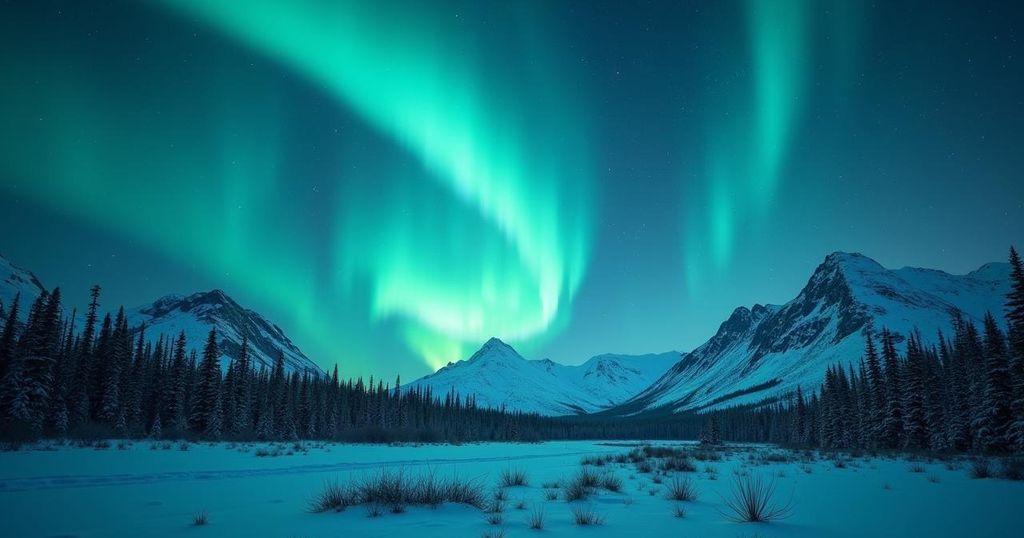Severe Solar Storm Brings Northern Lights to Uncommon Locations Worldwide

A severe solar storm on Thursday night resulted in stunning displays of auroras visible in regions including New York, Washington D.C., and as far south as Texas. This event highlights a surge in solar activity during the current 11-year solar cycle, with experts suggesting more auroras may be observed in the coming years.
On Thursday night, an extraordinary solar storm captivated skywatchers across the globe as vibrant auroras illuminated the night sky in various hues of purple, red, and green. Typically confined to higher latitudes near the Earth’s poles, the northern lights, or aurora borealis, were observed unusually far south, reaching cities such as New York, Washington D.C., and as far down as Texas, Alabama, and Mississippi. This phenomenon marks the second notably intense geomagnetic storm this year. Previously, on May 10 and 11, a more powerful storm rated as ‘extreme’ significantly impacted Earth, showcasing the most impressive auroral displays witnessed in decades, if not centuries. Notably, auroras were also spotted in regions as diverse as Australia, North America, Central America, South America, southern Africa, and central Europe. The geomagnetic storm that struck on Thursday resulted from a coronal mass ejection—an explosion of solar particles and energy on the sun—which invaded Earth’s magnetic shield at an astonishing speed of nearly 1.5 million mph. As solar particles followed the planet’s magnetic field into the upper atmosphere, they interacted with oxygen and nitrogen molecules, producing the colorful light characteristic of auroras. The occurrence of red auroras became more frequent at lower latitudes due to their visibility from greater distances compared to other colors observed in auroras. Europe greeted the northern lights first, with spectacular displays evident as far as London and southern France. Some aurora enthusiasts expressed trepidation that the spectacle might diminish before local sunset in the United States, but anticipation turned to delight as the lights persisted, enchanting observers nationwide. Notably, D.C.—which missed the amazing display in May—witnessed the rare event, where the auroras could be seen with the naked eye from around 7:10 to 7:25 p.m. and with high-sensitivity cameras thereafter. These remarkable geomagnetic storms coincide with the peak of the 11-year solar cycle, during which such solar phenomena are expected to occur more frequently. Experts in the field have indicated that more auroral displays may be forthcoming. As solar physicist Bob Leamon noted, “The next three or four years, we should see some fine displays of aurora. It’s like a whole generation of people discovering something for the first time.”
The occurrence of auroras is primarily governed by solar activity, specifically coronal mass ejections or solar storms that affect the Earth’s magnetic field. The disturbances caused by these storms allow charged solar particles to enter the atmosphere, leading to the visual phenomenon recognized as auroras. Typically, these lights are best viewed in polar regions; however, fluctuations in solar wind can enable sightings at much lower latitudes. The present solar cycle, characterized by varying levels of solar activity over approximately eleven-year intervals, has significant implications for the frequency and intensity of these celestial displays. Recent storms have heightened public interest and scientific inquiry into the potential for more widespread auroral events in the coming years.
In summary, the recent severe solar storm has led to an exceptional display of auroras far beyond their usual regions, delighting observers from cities such as New York and Washington D.C. to as far south as Texas. This marks an exciting period in the current solar cycle, suggesting that more remarkable auroral displays can be expected in the near future, as indicated by scientists. The interaction between solar particles and the Earth’s atmosphere not only creates stunning visual art in the night sky but also contributes to our understanding of solar activity’s effects on Earth.
Original Source: www.washingtonpost.com






